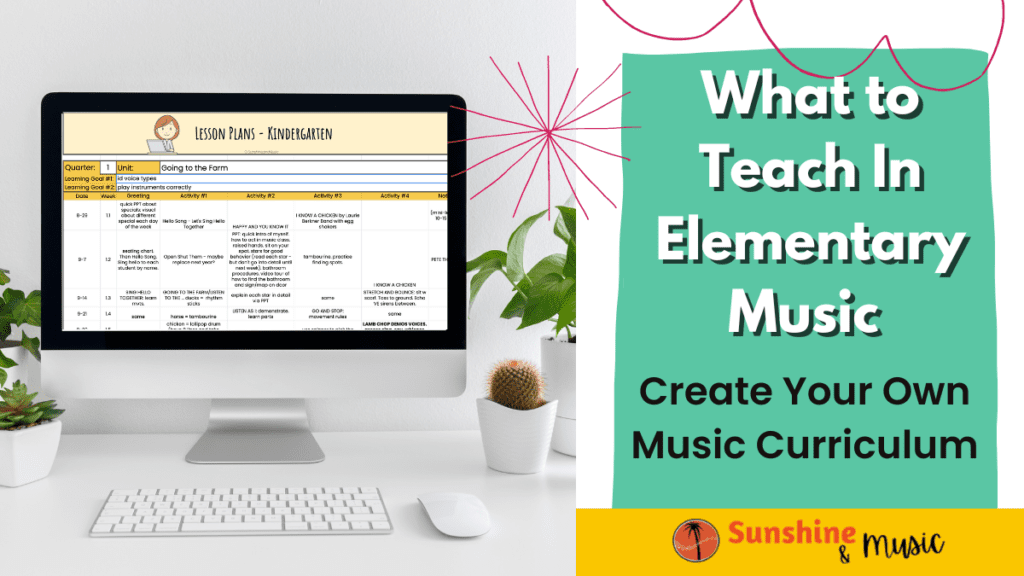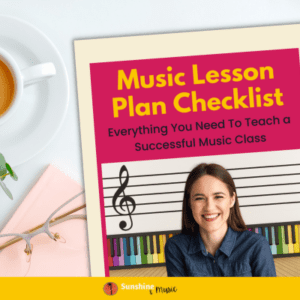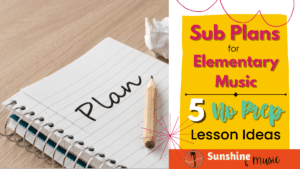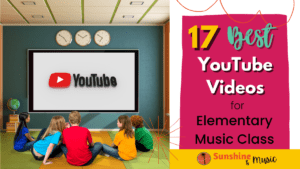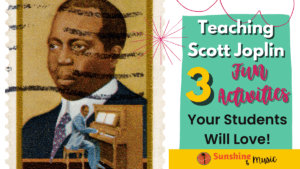Trying to figure out a music curriculum for elementary music is a challenge. What should you teach your students? When should you teach it? How should you teach it? You might just throw in the towel and purchase a pre-made music curriculum. But even then, how do you know which one is good?
A good music curriculum comes down to sequencing. You can feel good looking at your lessons and seeing that you’ve covered every standard, but without putting the content in the right order, you might not see the results you were looking for. I am here to tell you that the way in which you introduce and expand on musical ideas can make all the difference in the world.
Why Use Sequential Learning in Elementary Music
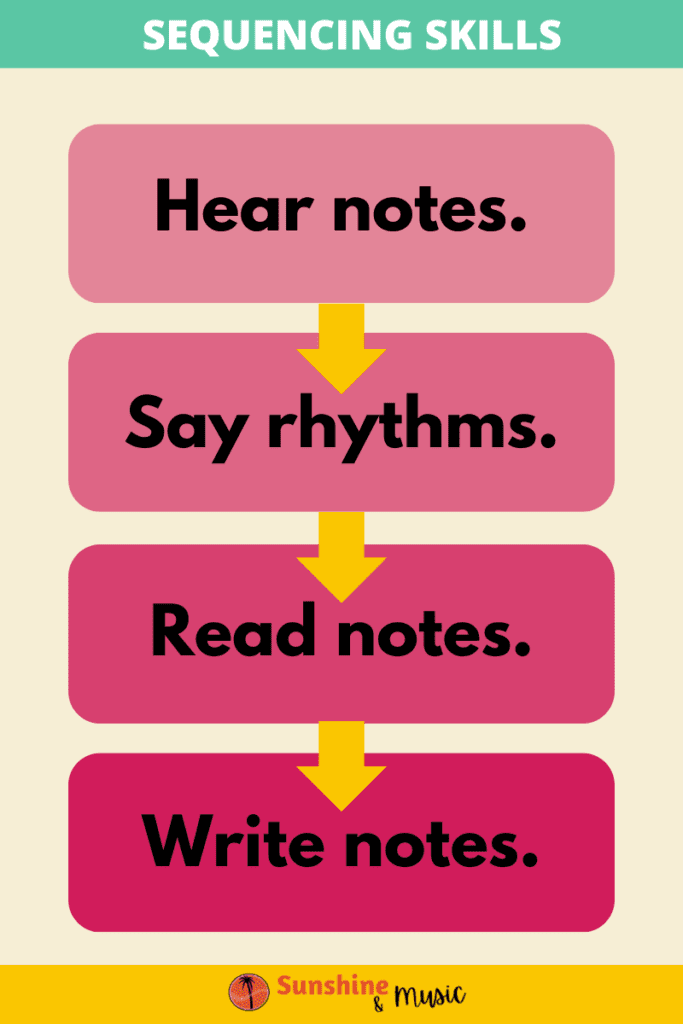
In music, we want to teach students skills in a particular order, so that they can build one skill upon the next. If you put the proverbial cart before the horse, you will find that you and your students become frustrated as they struggle to understand the concepts you are teaching.
By making sure to sequence skills appropriately, you will create a strong foundation of musical understanding that your future lesson can grow off of. You will find that lessons progress with much more success. And you will better be able to accommodate or adjust lessons in the moment, as you know where your lessons are steering towards all year long, and from year to year.
Let’s talk about some of the ways that sequencing musical skills can help make teaching and learning flow effortlessly.
Musical Skills: Moving From Simple To Advanced
Starting With the Basics
When you build a solid foundation of musical skills, then you can progress to more advanced skills with way more success. Things like steady beat and tonal center are critical building blocks.
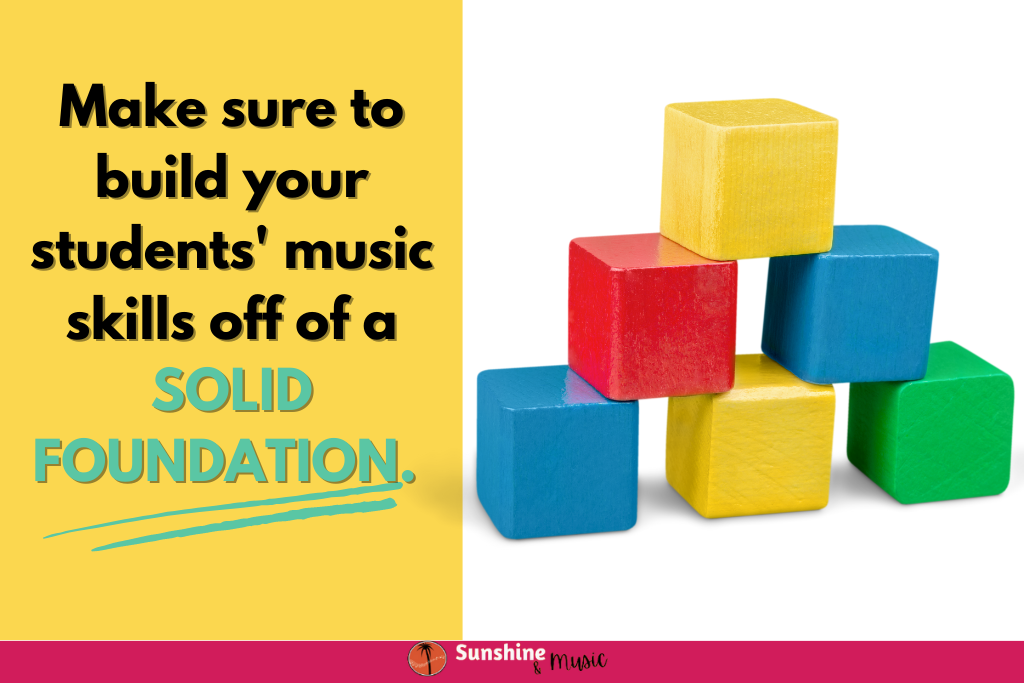
Like a house with a bad foundation, if you don’t work on a solid understanding of these fundamentals, everything else is going to sag. Rhythm without steady beat has no context and will tend to flux out of time, since they don’t have a solid understanding of how it fits with the beat.
Improvisation will be noise exploration at best, because students aren’t actually thinking rhythmic vocabulary or fitting with a beat. They are just basically banging on a drum – or whatever your instrument of choice may be.
By building a strong foundation, students have an actual internal frame of reference as they move on to each step from hearing and moving to saying and reading and writing.
Think of it sort of like a baby, who has seen lots of cats before they learn to say the word cat, and definitely before they read and write the word cat. If you didn’t know what a cat (or in this case, a half note – for example) was, it would make all the other steps rather artificial and meaningless.
Song Writing Fail
Let’s take a real world example of how you can make a huge impact on your lessons by sequencing correctly. And by real world, I mean an example that actually happened to me.
I wanted my students to be able to write a ukulele song on the staff using the four open string notes. We read rhythms on the staff, we did flashcards for each string, and I even did a class example of how to create their own song.
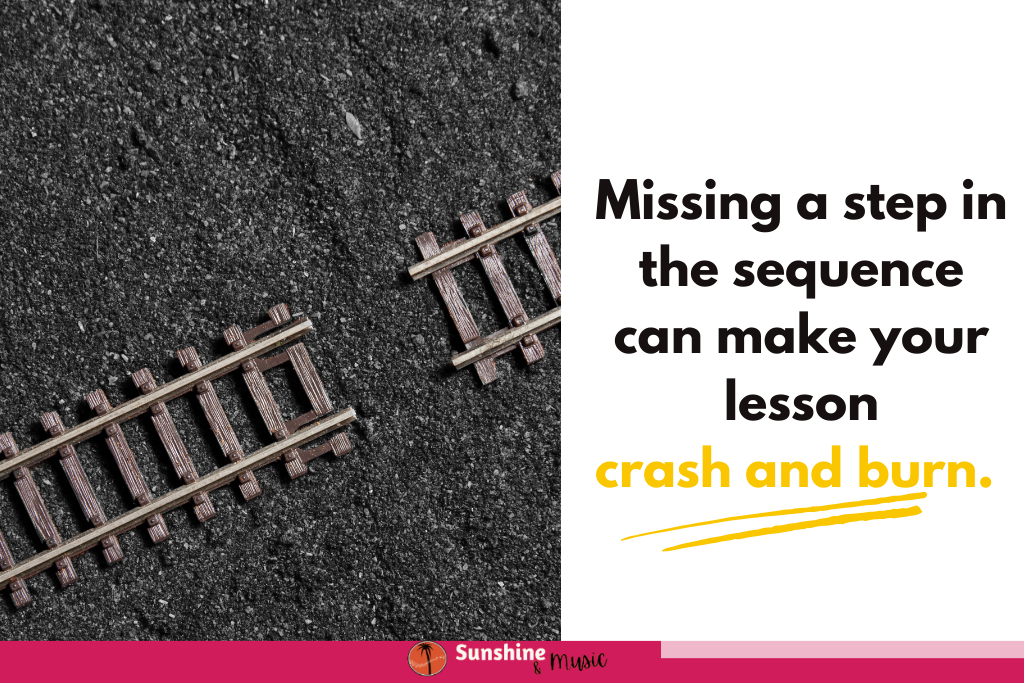
And yet, when it came time to do the assignment independently, I realized I had left out a crucial step. The students had never actually written notes on the staff before. They had only read them. If I had simply given them one or two chances to practice writing notes beforehand, they would have the missing piece they needed to be successful with the assignment.
Empower Students Through a Elementary Music Curriculum of Sequential Learning
Let’s take the ukulele song writing fiasco I just described. Can you imagine how frustrated or checked out some students got as they struggled with the assignment? Can you imagine how frustrated I was as the only resource trying to help a classroom full of confused kids?
Not a good learning environment, huh?
When students can feel success in learning through small steps, it encourages them to keep taking more and more steps. And with those steps, they can accomplish great things. There is nothing better than the feeling of pride my students get when they have mastery over something.
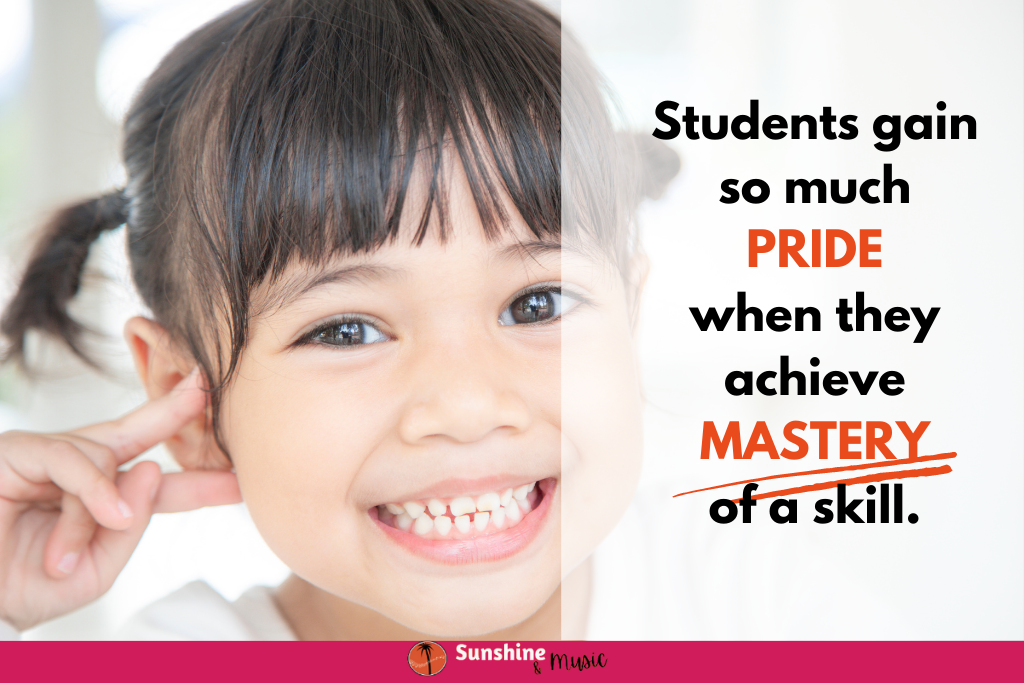
With the right sequence, you can make learning easy and natural. And see the faces of your students beaming with pride over their learning.
Music Skills Throughout the Year and Year Over Year
Another important step in creating your own music curriculum is to look at skill development within a lesson, unit, year and multi-year framework.
A zoomed out overview of what children will learn K-5 will help you see how concepts get built upon year over year. This gives you your general flow of skills. Then, by zooming in more you can make sure that each unit flows into the next in a progression that will get them to the skills they need for the next grade level.
Zoom in again to make sure you take into account where they are currently at and what steps you will have to take to get them to the desired new skill level.
Even within a lesson you still need to make sure you present the information in an order that won’t confuse them or leave them with missing steps.
Sequencing happens everywhere within your planning.
Using Your Sequenced Music Curriculum For Major Impact
Are you ready to revamp your elementary music curriculum to create a clear framework of skills that flow easily from lesson to lesson and year to year?
I am here to help! Sequencing curriculum is my jam (and also something that I am very passionate about). Another thing I feel passionate about is helping fellow music teachers.
If you would like to start leveling up your lesson planning, check out my 10 Tips for What to Include in Your Elementary Music Lessons. And sign up to grab my free Lesson Plan Workbook for Elementary Music.
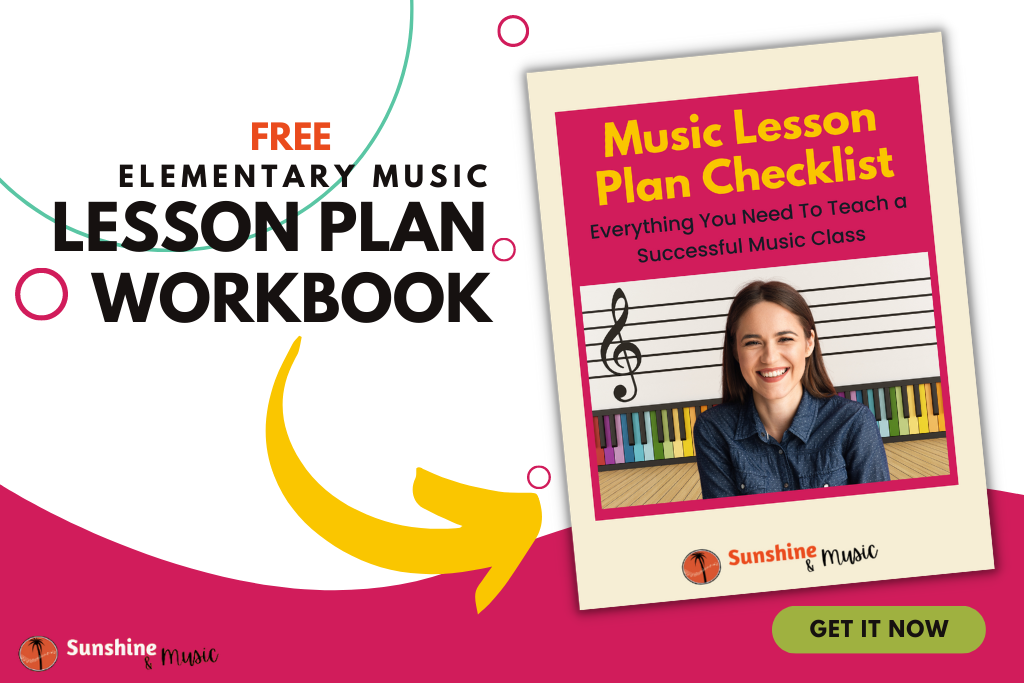
I hope to see you there, where we can really dive into making your music curriculum as great as it can be.

